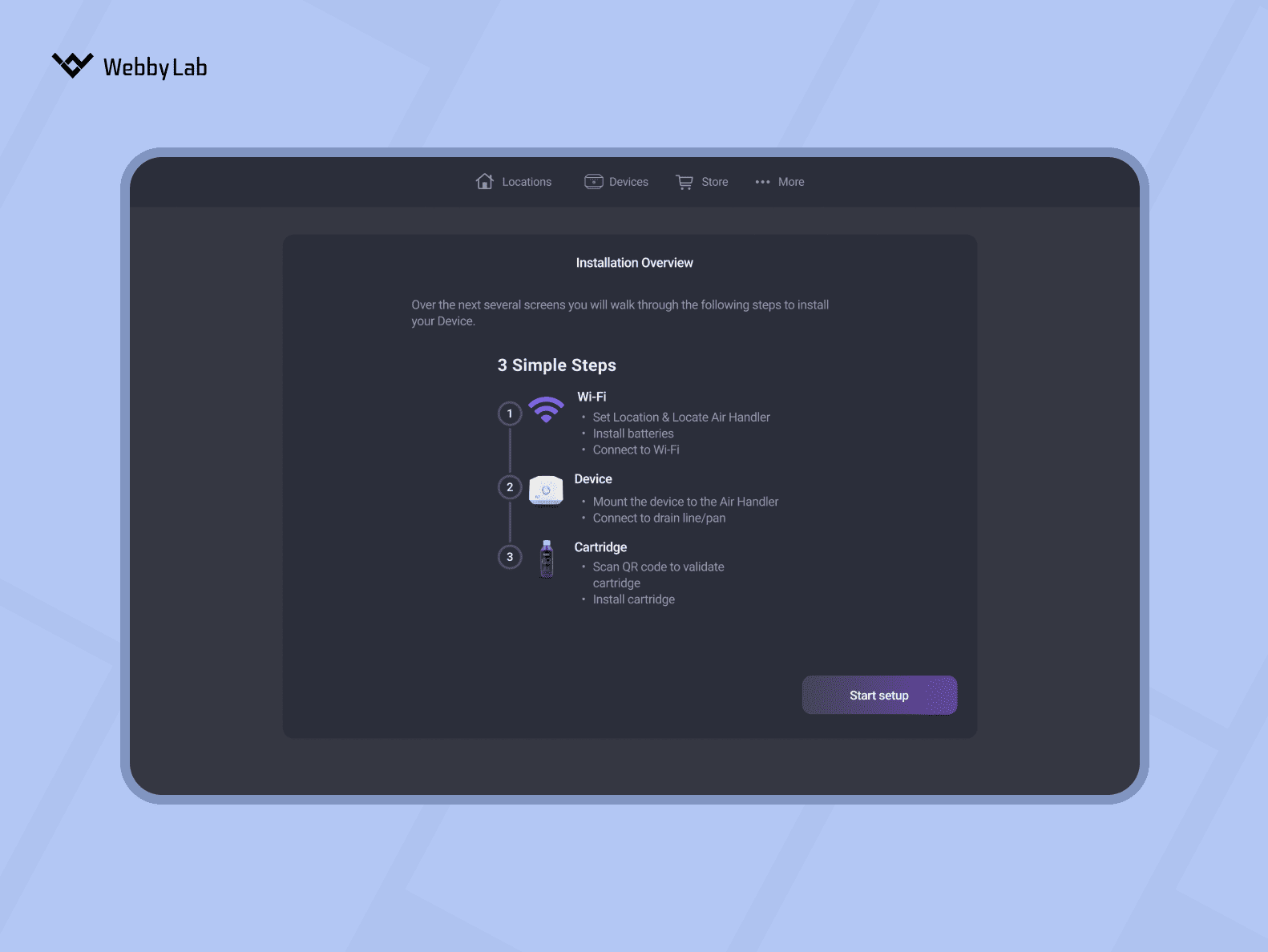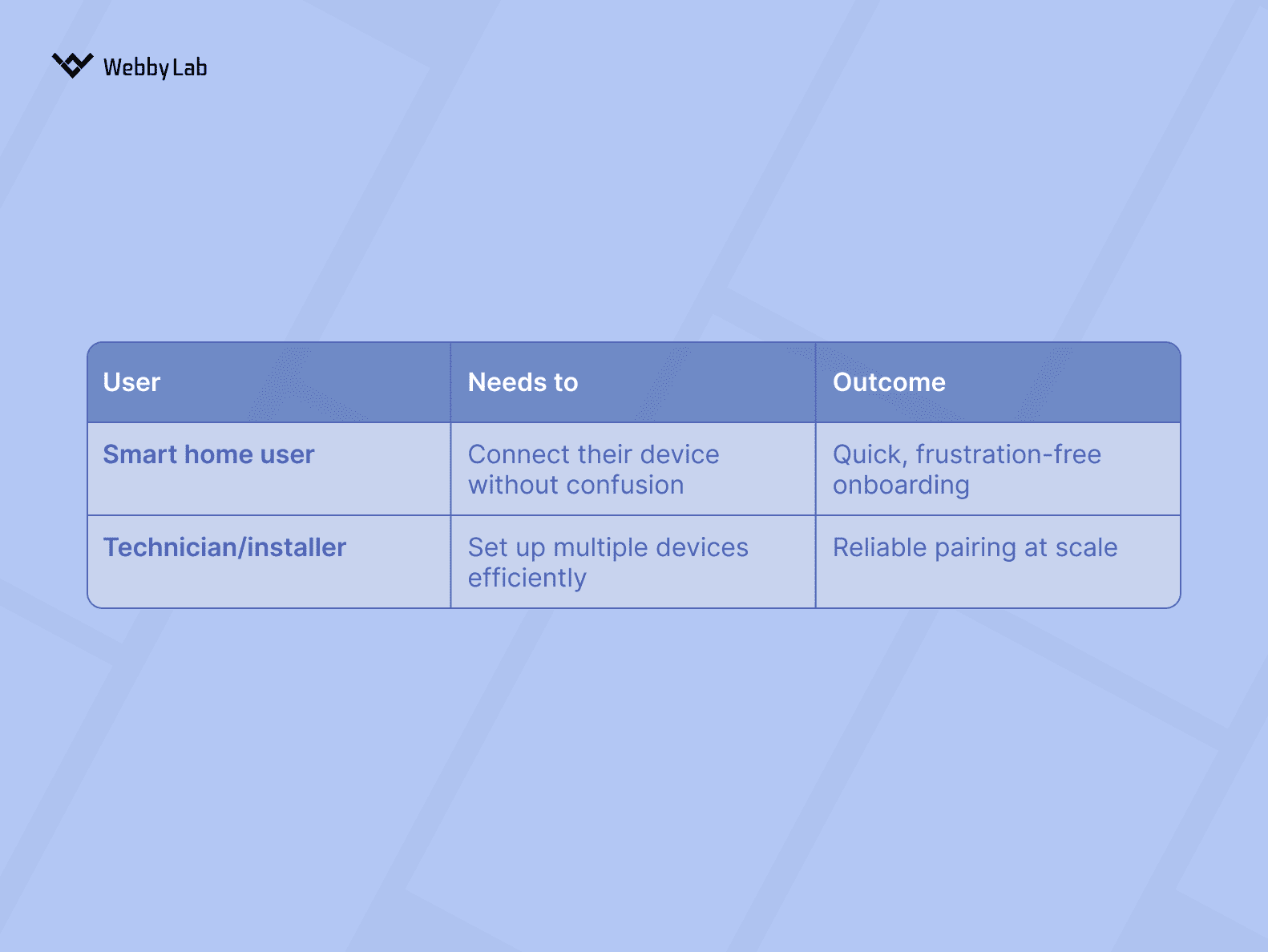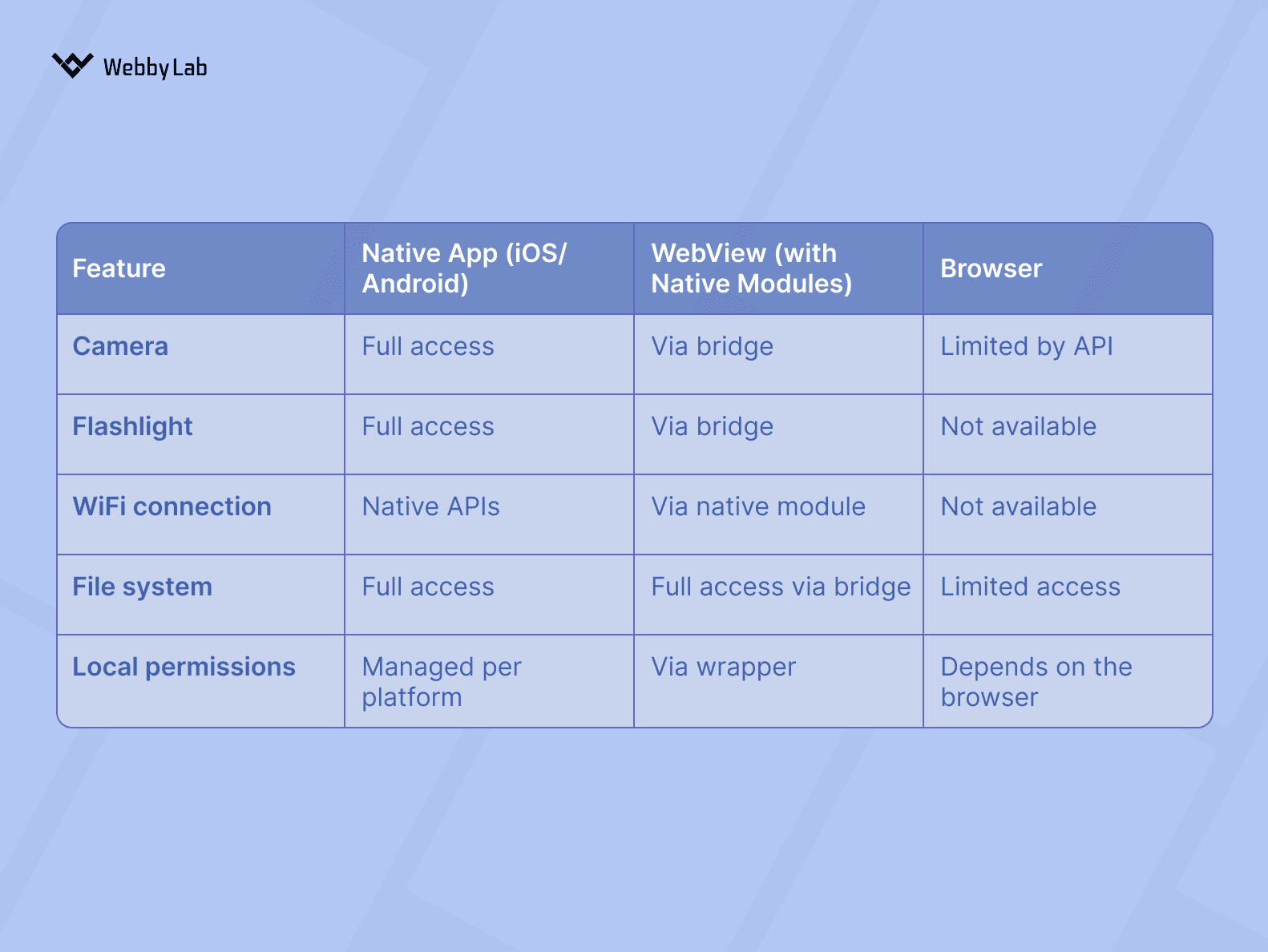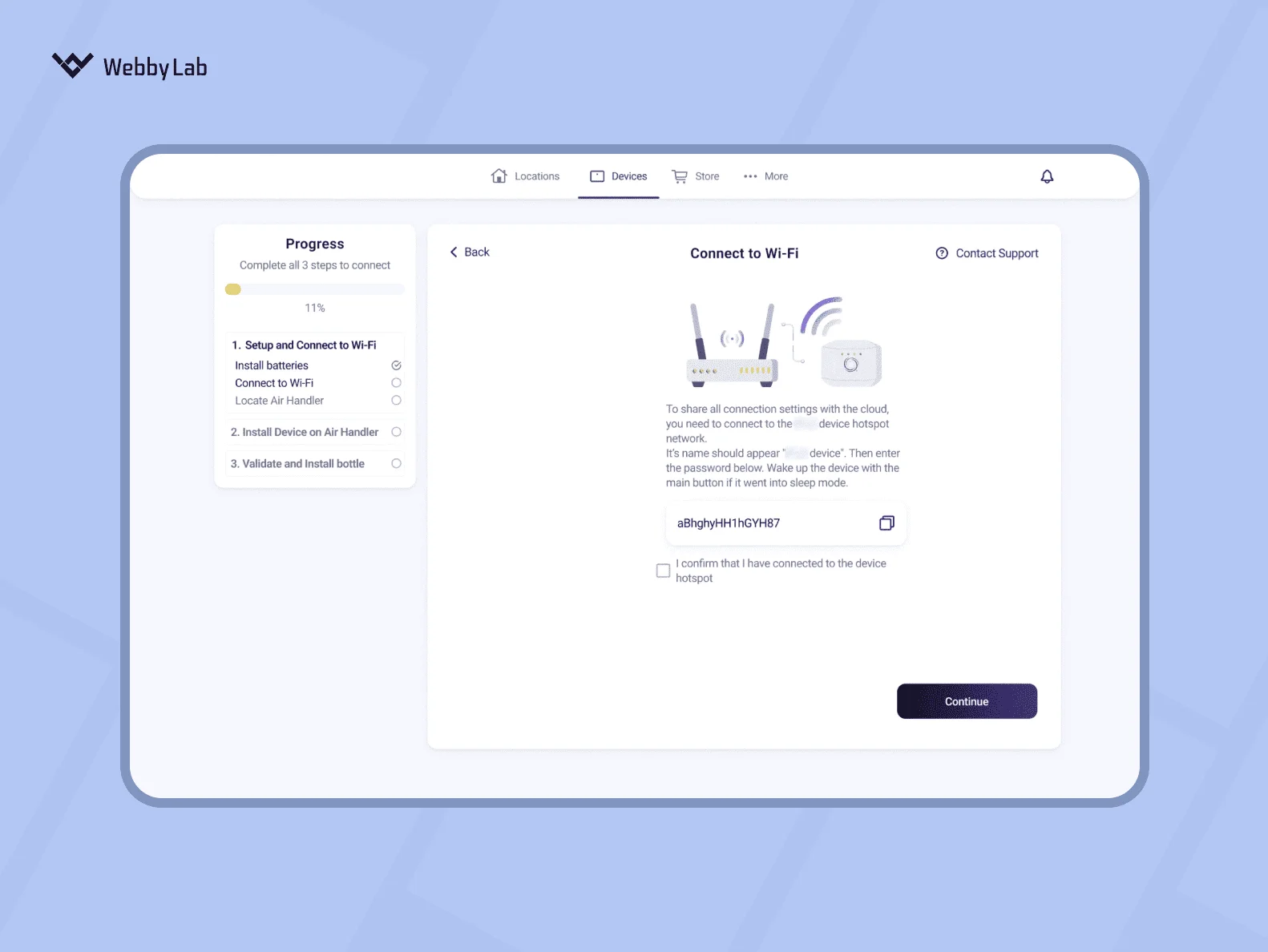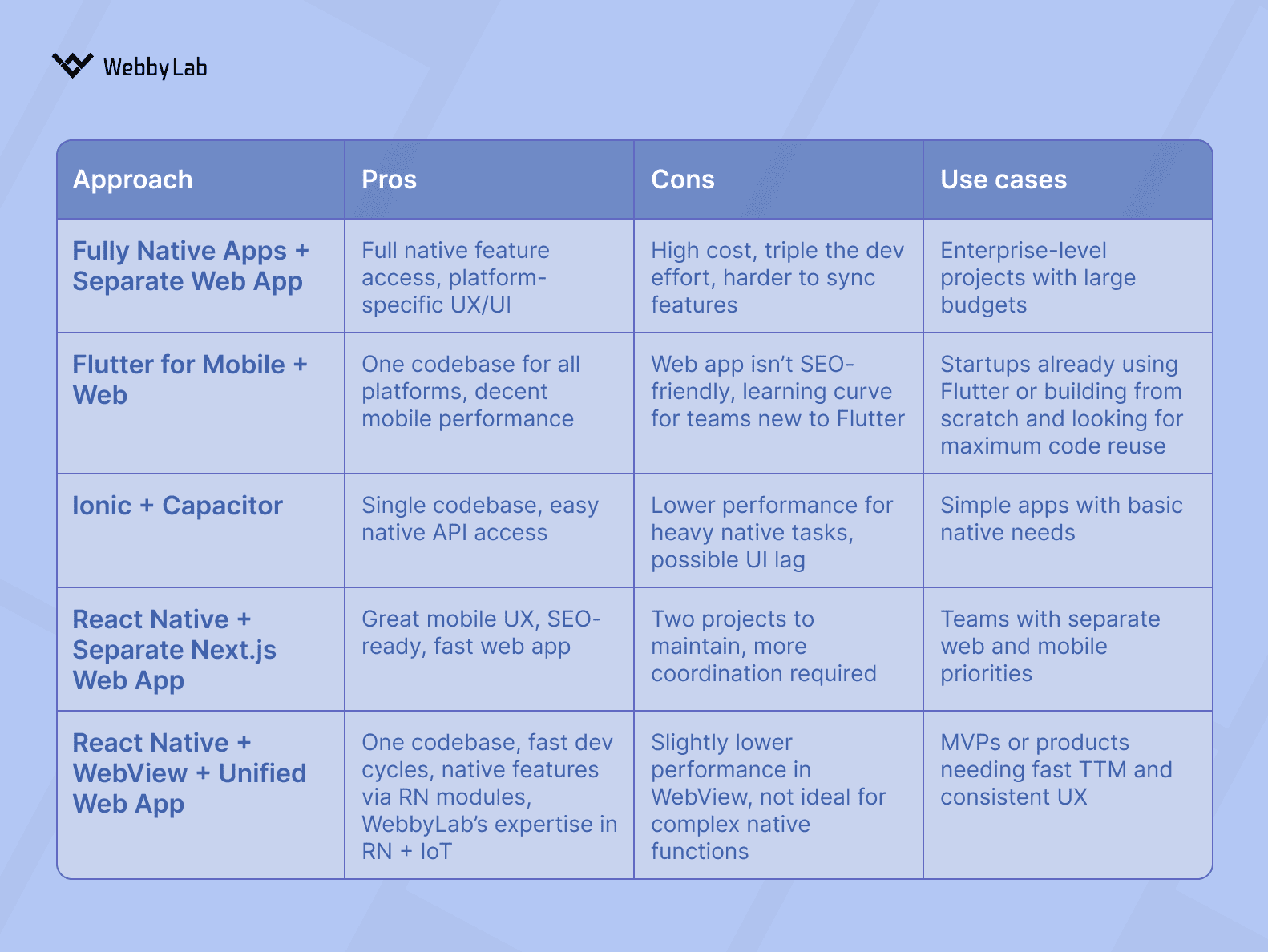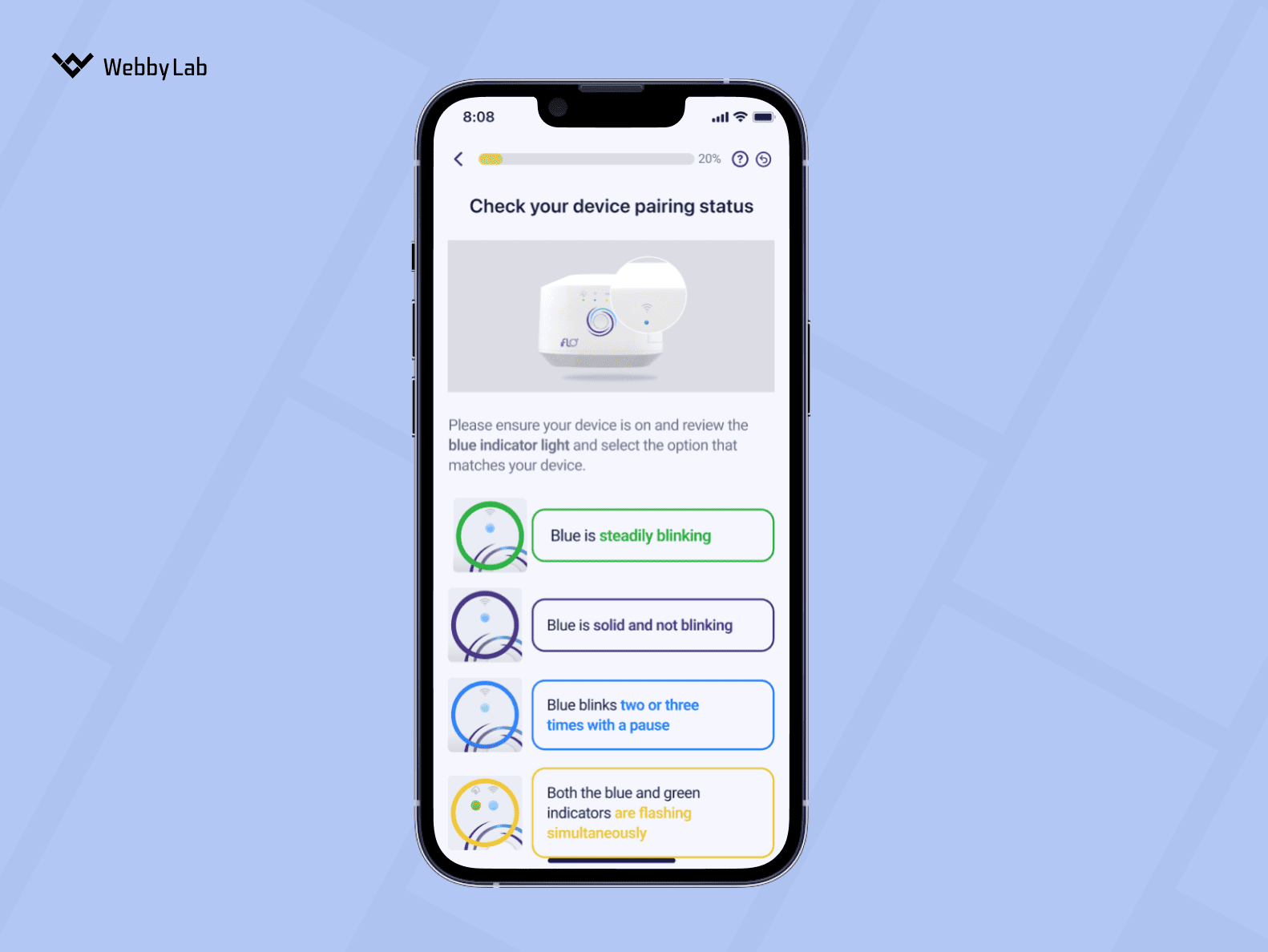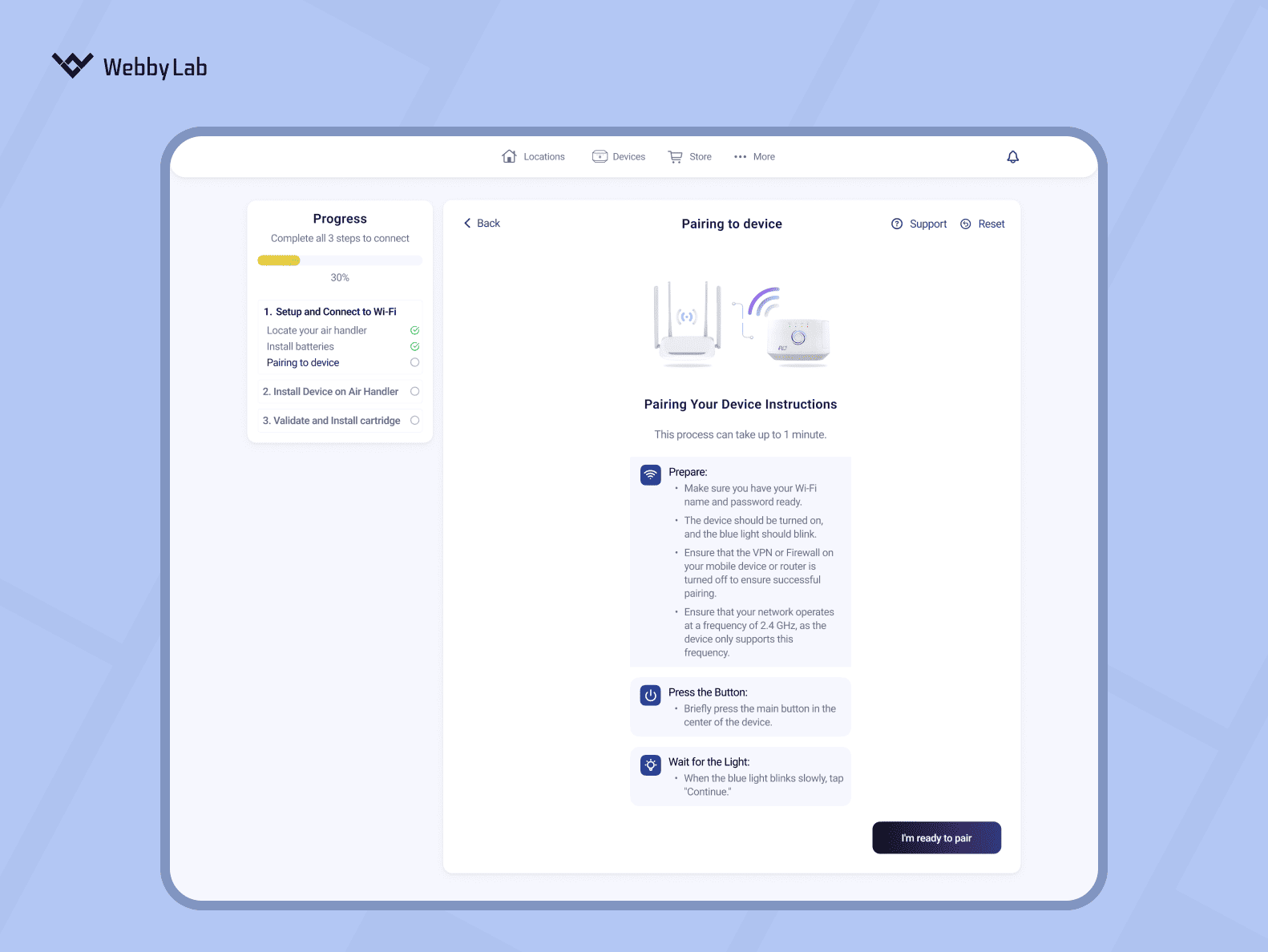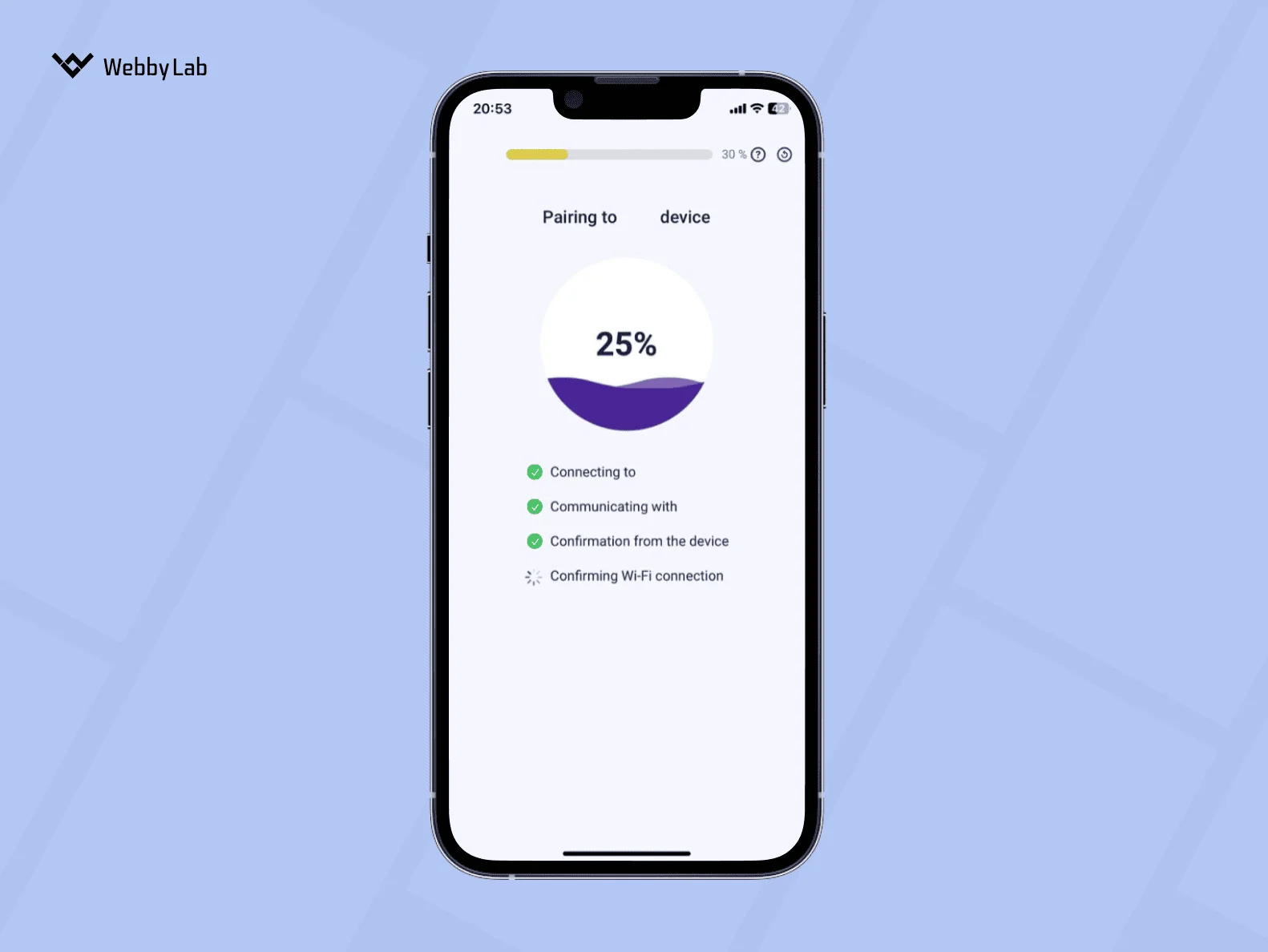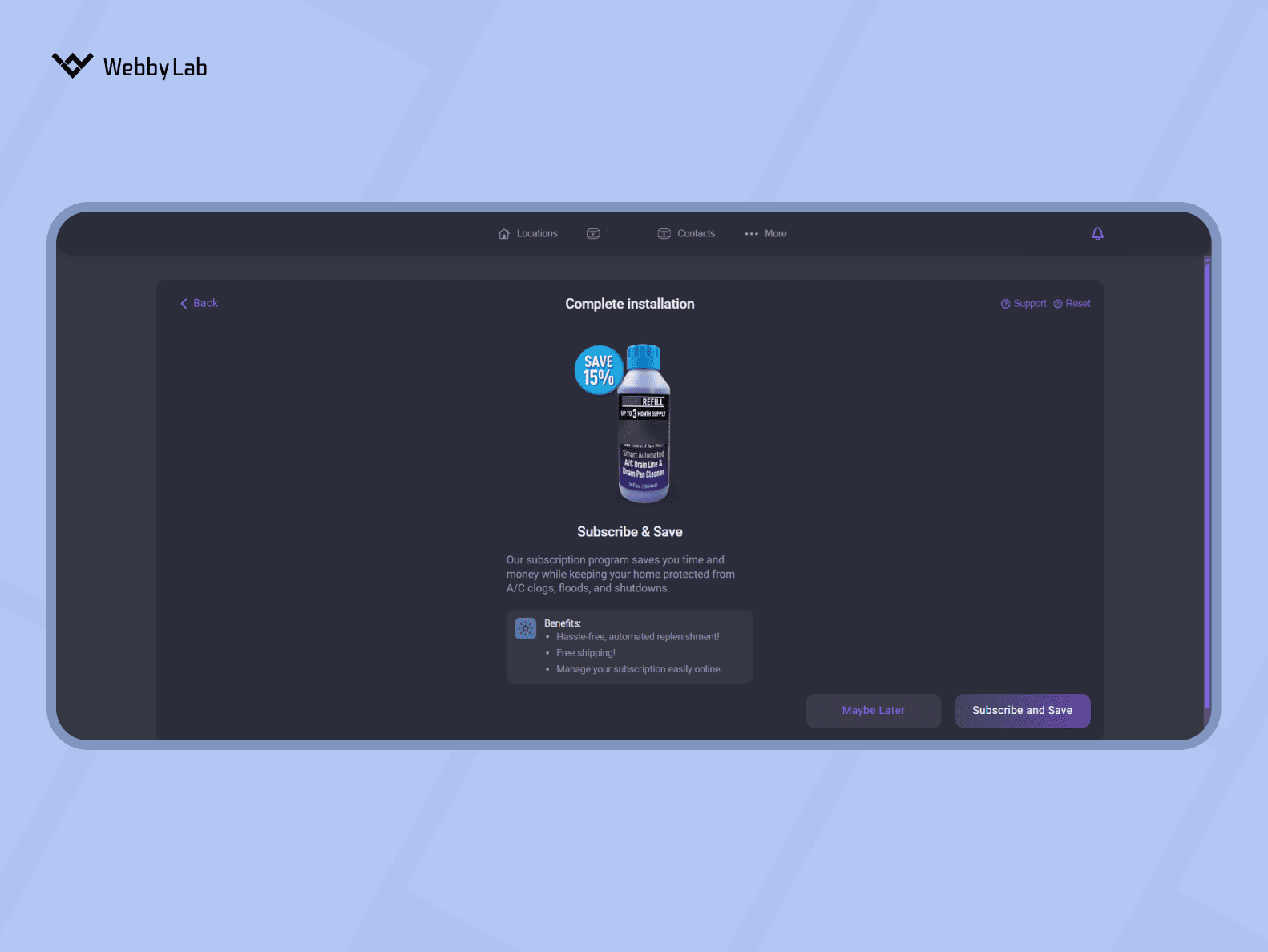How We Built a Cross-Platform IoT App for Seamless WiFi Device Pairing
Written by:

Kostiantyn Oliynyk
Head of IoT at Webbylab
With a robust academic background in Telecommunication Systems Engineering, I apply my knowledge to lead innovations in the IoT domain. Starting as the first team member in the newly formed IoT department at WebbyLab, I've spearheaded its growth, fostering the expansion into embedded and hardware development alongside our core software projects. My dedication lies in pushing the boundaries of IoT technology, fostering a culture of innovation and excellence that profoundly impacts our clients' operational success.
Yes. Many IoT devices use Bluetooth (particularly BLE) for enabling autonomous IoT device pairing using Bluetooth. This is the initial connection step. Then, the app can use this Bluetooth link to connect the device to WiFi for full functionality.
Absolutely. Whether you require securing device connectivity in the industrial Internet of Things or in enterprise-grade settings, the pairing flow can be tailored to your hardware and use case. This way, you can ensure the best remote IoT device access and user experience.
The best way how to use remote connect IoT device to WiFi is through a mobile app with access to native WiFi APIs. It allows the app to detect and connect to the device’s access point and send network credentials securely.
To deliver the best remote access IoT devices and smooth onboarding, keep all instructions simple. Plus, don’t forget progress indicators and designing with offline and retry logic in mind.
First of all, we use the best wireless technology for IoT devices to ensure the best web access IoT devices. Besides that, we design pairing flows with clear feedback, fallback handling, and offline modes, and account for poor network conditions from the start.


